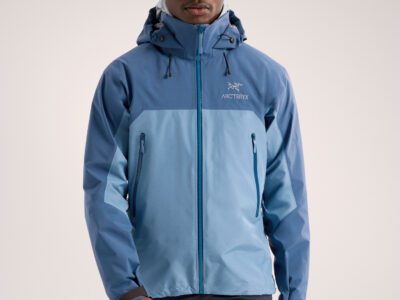
Preparing for the Worst and Recovering Strong
Hurricanes are among the most destructive natural disasters, and with a storm like Hurricane Helene approaching, it’s crucial to not only prepare ahead of time but also know what to do afterward. Whether you’re looking to build a go bag to keep your family safe before a storm hits or need tips for returning to normalcy after it passes, this guide covers it all.
Part 1: Before the Storm—Packing the Ultimate Go Bag
The Basics: What’s a Go Bag and Why Do You Need One? Think of a go bag as your emergency lifeline—a bag packed with everything you need to survive for a few days if you need to evacuate. Whether you’re dealing with high winds, storm surge, or the need to leave in a hurry, your go bag will make sure you’re ready.
Must-Haves for Your Go Bag
Start with the essentials. FEMA recommends packing:
- Water: One gallon per person per day for at least three days … so 3 gallons per person.
- Non-perishable Food: Pack enough to sustain each person (and your pets!) for three days.
- Medications: Both prescription and over-the-counter meds.
- Flashlights and Batteries: You’ll need reliable lighting when the power’s out.
- First-Aid Kit: Bandages, disinfectants, and all the basics for treating minor injuries.
- Multipurpose Tools: A Swiss Army knife or Leatherman can be a lifesaver.
- Important Documents: Keep digital and physical copies of ID, insurance policies, and other essential papers.
Go Bag Extra Credit: Comfort and Connectivity
- Comfort Items for Kids: Don’t forget a teddy bear, favorite blanket, or tablet for your children.
- Backup Power: An external power bank or solar charger will help keep your phone alive for updates.
Exit Strategy or Plan Your Evacuation Route: Print maps and mark two possible evacuation routes. With hurricanes, conditions can change quickly, and having a backup plan ensures you don’t find yourself scrambling.
Part 2: After the Storm—Safety and Sanity in Recovery
Safety First: Once the hurricane has passed, don’t head home until officials give the all-clear. Flooded roads, downed power lines, and hidden hazards can make an early return dangerous.
When you return, try to arrive during the day so you won’t have to rely on flashlights. Before going inside, do a full walk-around of your property to check for damage, gas leaks, or electrical hazards.
Dealing With Flooded Homes and Electrocution Risks: If your home has standing water and you can safely access your power switch, turn it off. If you can’t safely reach it, call a professional. Never enter floodwaters—they can contain sewage, chemicals, and pathogens, not to mention the risk of electrocution from underground or downed power lines.
Documenting the Damage for Insurance Claims: Before cleaning up, document all damage with photos and videos. Contact your insurance company immediately, and if applicable, apply for federal assistance through FEMA or file a claim through the National Flood Insurance Program.
Part 3: Staying Healthy—Food, Water, and Mold Concerns
Food Safety After a Hurricane: Keep your refrigerator and freezer doors closed until power returns. If the power has been out for more than four hours, the food may have spoiled, so “When in doubt, throw it out.” And be sure to throw away any food that may have come into contact with floodwater.
Safe Drinking Water and Boil Advisories: If your area is under a boil water advisory, stick to bottled water or boil your water before use. Do not use contaminated water for cooking, washing dishes, or hygiene.
Cleaning Up and Handling Mold: Flooded homes are breeding grounds for mold. Use a bleach mixture (1 cup bleach to 1 gallon of water) to clean any moldy surfaces. Those with respiratory conditions should avoid entering moldy spaces.
Part 4: Finding Power, Peace, and Sanity
Generator Safety and Carbon Monoxide Poisoning: If you’re using a generator, always run it outside, at least 20 feet from your home, with the exhaust pointing away from doors and windows. Carbon monoxide poisoning is a silent killer—invest in a battery-powered carbon monoxide detector to protect yourself and your family.
Emotional Well-Being After a Disaster: The aftermath of a hurricane is emotionally draining. Stress, anxiety, and feelings of helplessness are normal. Reach out for support if you need it—don’t go through it alone. The Disaster Distress Helpline at 1-800-985-5990 offers immediate crisis counseling, available 24/7.
Always Be Prepared
Preparation and recovery after a hurricane go hand-in-hand. Having a well-stocked go bag, an evacuation plan, and a post-storm checklist can make all the difference. Being prepared before a storm and knowing how to safely recover after can save lives, ease stress, and help your family bounce back faster. Stay safe, and be ready for whatever comes your way.














